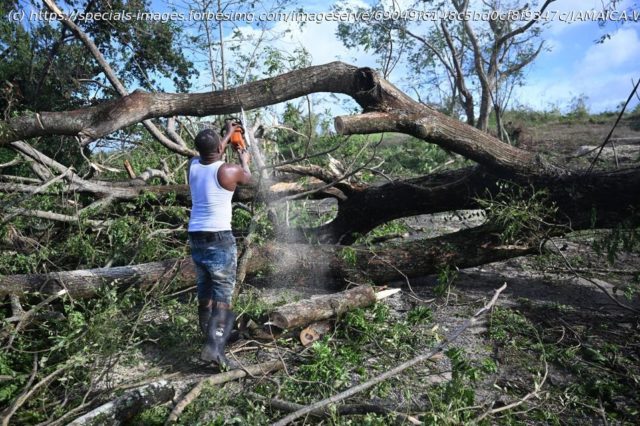As Hurricane Melissa tests Jamaica’s strength, a global network of Jamaicans rallies to rebuild — revealing what climate resilience truly looks like
In 1965, upon receiving the keys to the Jamaican capital city of Kingston, Rev. Dr. Martin Luther King Jr. reflected on his visit, saying, “In Jamaica, I feel like a human being.” He went on to share that he was proud to be among “brothers and sisters on this wonderful island.”
Sixty years later, that same island — the place that once offered refuge to a weary civil rights leader — is again testing the limits of its humanity and resilience. Hurricane Melissa, a monstrous Category Five storm, roared across Jamaica this week with sustained winds topping 252 miles per hour at low altitudes. Though the entire island felt its fury, the storm made landfall along the island’s southwest coast, in the parish of St. Elizabeth — a region too often left out of glossy tourism brochures but rich in culture, farmland, and working-class grit.
While outside the resort belt, St. Elizabeth’s role in Jamaica’s economy benefits the entire island. Known as the “breadbasket” of the island, St. Elizabeth and the other southwestern parishes are home to the farmers, fishermen and families who anchor the nation’s food supply and keep the economy resilient. Now those crops are flattened, those homes are flooded, the grids providing power have failed, and those parishes remain isolated due to Melissa’s devastation.
So far, at least 19 people have been confirmed dead, according to the Jamaica Embassy in Washington, DC, as the country begins to assess the full scope of Hurricane Melissa’s destruction. Much of the western half of the island has suffered severe damage to roads, bridges, and communications networks.
Four public hospitals have reported significant structural damage or power loss, and roughly 70 percent of the island remains without electricity, leaving hundreds of thousands in the dark as crews work around the clock to restore basic services.
“The entire infrastructure and everything needed for the convenience of modern living is destroyed here,” Jamaican Prime Minister Dr. Andrew Holness said on a visit to St. Elizabeth following the storm.“But, from what I have seen and the interaction, the people here are strong, resilient and positive in outlook.”
It’s that enduring positivity that makes Jamaica more than a geographic landmass in the Caribbean sea; it’s a people bound by connection, love, and faith that radiate far beyond the island’s shores. Whether through its music, its cuisine, or its unshakable belief in equality and the human spirit, Jamaica has long sown the seeds of resilience.
Those same seeds now drive a recovery effort that could become a model for climate resilience across the Caribbean and beyond.
This resilient spirit is easy to romanticize from afar, but in St. Elizabeth, it’s gritty, wet and real. The parish that feeds much of Jamaica is now blanketed in mud and silence, broken only by the sound of hammers, radios, and neighbors calling out for one another. This is where the country’s celebrated optimism and push to “keep the faith” meet their most challenging test: not on a concert stage, but in fields once flooded and houses now collapsed.
You don’t have to look far to find small miracles of progress. In a recent post on social media, reggae icon Beenie Man, born and still residing in Kingston, was seen shoulder to shoulder with other Kingstonians, packaging rice and preparing meals for fellow Jamaicans in the hardest-hit parishes.






